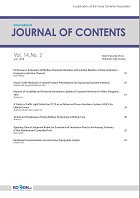- 권한신청
- P-ISSN1738-6764
- E-ISSN2093-7504
- KCI
 ISSN : 1738-6764
ISSN : 1738-6764
Subject Independent Classification of Implicit Intention Based on EEG Signals
Abstract
Brain computer interfaces (BCI) usually have focused on classifying the explicitly-expressed intentions of humans. In contrast, implicit intentions should be considered to develop more intelligent systems. However, classifying implicit intention is more difficult than explicit intentions, and the difficulty severely increases for subject independent classification. In this paper, we address the subject independent classification of implicit intention based on electroencephalography (EEG) signals. Among many machine learning models, we use the support vector machine (SVM) with radial basis kernel functions to classify the EEG signals. The Fisher scores are evaluated after extracting the gamma, beta, alpha and theta band powers of the EEG signals from thirty electrodes. Since a more discriminant feature has a larger Fisher score value, the band powers of the EEG signals are presented to SVM based on the Fisher score. By training the SVM with 1-out of-9 validation, the best classification accuracy is approximately 65% with gamma and theta components.
- keywords
- Implicit Intention, EEG, Subject Independent BCI, Support Vector Machine, Fisher Score.
- 다운로드 수
- 조회수
- 0KCI 피인용수
- 0WOS 피인용수

